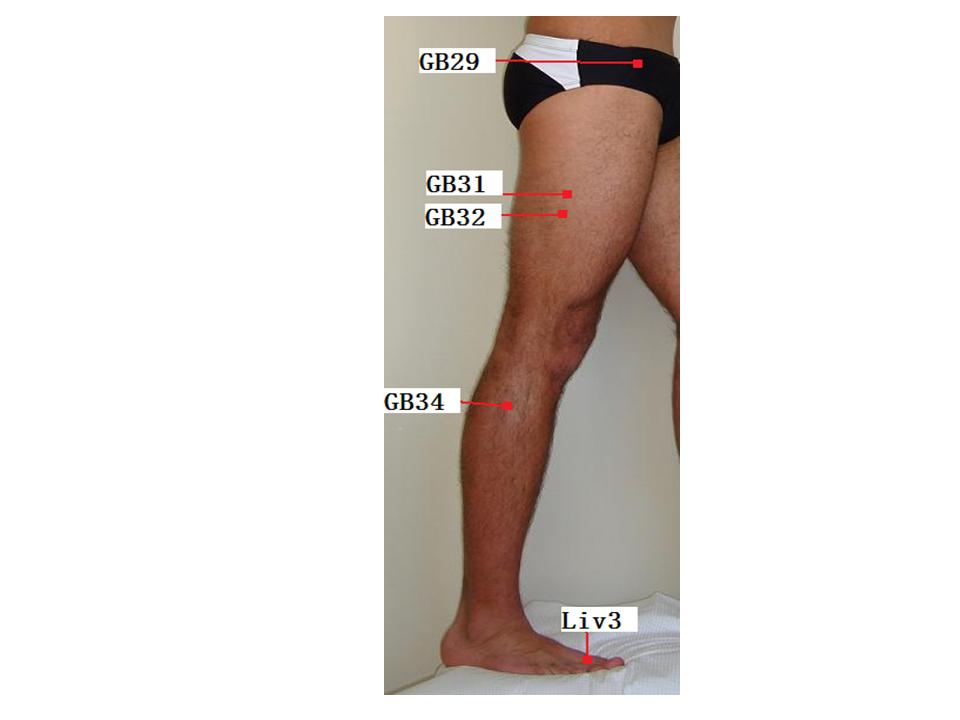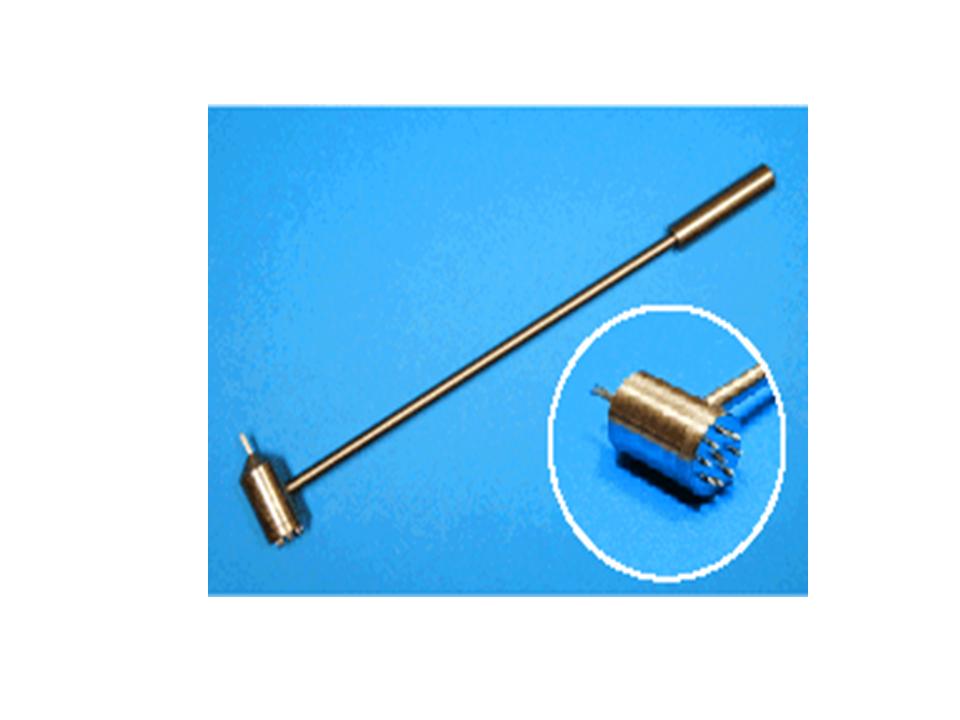Dear Friends:
You are cordially invited by Jun Xu, M.D. to talk and signing of his new book: “Magic Needles, Feel Younger and Live Longer with Acupuncture”
at Auditorium of Christ Church, 254 East Putnam Avenue, Greenwich, CT on Sunday, June 26, 2011 at 10:30 AM. Dr. Xu will also present lecture of ” Neck Pain after Computer Use, Allergy and Sinusitis, How May Acupuncture and Chinese Herbs Help You?” Please join this exciting event.
Jun Xu, M.D. and Staff
News Letter, Vol. 3 (6), June, 2011, © Copyright
Jun Xu, M.D. Lic. Acup., Hong Su, C.M.D., Lic. Acup.
Robert Blizzard III, DPT
Rehabilitation Medicine and Acupuncture Center
1171 East Putnam Avenue, Building 1, 2nd Floor
Greenwich, CT 06878
Tel: (203) 637-7720 begin_of_the_skype_highlighting (203) 637-7720 end_of_the_skype_highlighting
Burning sensation at right lateral thigh
Fig 6.1
Janina S., a 54-year-old female, has been experiencing a tingling sensation and numbness on the outside of her right thigh for six months. The pain sometimes burned, sometimes was dull and extended to the groin area and the buttock. It often became worse when Janina did much walking or standing and she felt altered sensation in the front and lateral of thigh. Sometimes she woke up in the night feeling pain on the lateral front of the thigh. She consulted her primary care physician who told her she probably had a pinched nerve on her lower back and was given physical therapy, which did not help her at all. She had an X-ray and an MRI which showed negative findings, so she was frustrated at not getting to the cause of her problem or given any treatment for it.
She was then referred to me for examination and treatment. I found no tenderness on the lower back or lateral side of the thigh, and no decreased range of motion of the lower back, hip or knee, except that there was slightly decreased sensation of the anterior and lateral thigh. I concurred with her regular physician that she probably had a pinched nerve, but need further explanation to the patient.
This nerve is called the lateral femoral cutaneous nerve, which passes underneath the inguinal ligament and might be compressed, thus causing the numbness, tingling and burning sensation in the lateral and anterior thigh. In most people this nerve passes through the groin to the upper thigh without any compression, but there is a condition, named as meralgia paresthetica, i.e. the lateral femoral cutaneous nerve is trapped and becomes pinched under inguinal ligament.
Fig. 6.2 Anatomy of the lateral femoral cutaneous nerve.
http://emedicine.medscape.com/article/1141848-overview
Fig. 6.3 Sensory distribution of the lateral femoral cutaneous nerve.
Common causes of this compression include the following:
- Tight clothing.
- Obesity
- Pregnancy
- Scar tissue around the inguinal ligament
- Walking, cycling or standing for long periods of time.
- Other conditions such as diabetes, alcoholism and thyroid disorder.
The diagnosis of meralgia paresthetica is based mainly on physical examination and patients’ complaints, especially as laboratory studies such as blood tests and imaging studies – MRI’s, X-rays – are not very specific, though an EMG and nerve conduction studies may be helpful in making a diagnosis.
History
- When the LFCN is entrapped, patients usually feel pins, needles, numbness, tingling, sometimes burning, sharp pain sensation at the lateral thigh. Because individual LFCN distribution might be different, some patients may have the above symptoms, i.e.paresthesias at frontal and/or back of the thigh, or groin area.
- Symptoms are typically unilateral. However, they may be bilateral in up to 20% of cases.
- Biking, Swimming, walking, standing, running may aggravate the symptoms; sitting tends to relieve them.
Physical Examination:
- Numbness, tingling sensation, i.e. paresthesias, can be revealed at frontal and lateral thigh.
- Occasionally, patients are very sensitive to touch, and feels burning, and sharp pain with palpation, i.s. hyperesthetic in this area.
- Tapping over the upper and lateral aspects of the inguinal ligament or slightly over extending the thigh backward, which stretches the nerve, may reproduce or worsen the paresthesias.
- Pelvic compression testing is positive. By deep palpation just below the anterior superior iliac spine at the groin area may reproduce the symptom.
- Motor strength in the involved leg most likely is normal.
Treatment with western medicine:
- Lifestyle and home remedies such as avoidance of tight clothes, weight loss, maintaining a steady low weight and avoiding standing or walking for long periods can be helpful.
- Medications. There are many helpful medications for this condition, including corticosteroid injections which can reduce inflammation and temporary relief of pain, also tricyclic antidepressants and Neurotin.
- Physical therapy
- When the pain is severe, a focal nerve block can be done at the inguinal ligament with a combination of lidocaine and corticosteroids. This should temporarily relieve the symptoms for several days to weeks. Ultrasound guidance for the blockade may be beneficial in patients with regional anatomical variations.
Traditional Chinese medicine:
- Acupuncture body acupuncture:
The acupuncture points usually I choose are: Sp 12 Chong Men, Sp 13 Fu She, GB 29 Ju Liao, GB 31 Feng Shi, GB 32 Zhong Du, Arshi, GB 34 Yang Ling Quan, Sp 10 Xue Hai and Liv 3 Tai Chong.
These insertions are combined with electrical stimulation for 30 minutes three times a week for about four weeks.
| Points | Meridan/No. | Location | Function/Indication | |
| 1. | Chong Men | Sp 12 | Superior to the lateral end of inguinal groove, on the lateral side of the femoral artery, at the level of the upper border of symphysis pubis | Abdominal pain, hernia, dysuria, local groin pain |
| 2. | Fu She | Sp 13 | 0.7 inch laterosuperir to Chong Men, 4 inch laeral to the midline of the body | Lower abdominal pain, hernia, local groin pain |
| 3. | Ju Liao | GB 29 | In the depression of the midpoint between the anterosuperior iliac spine and the great trochanter | Pain and numbness in the thigh and lumbar region, paralysis, muscular atrophy of the lower limbs |
| 4. | Feng Shi | GB 31 | On the midline of the lateral aspect of the thigh, 7 inch above the transverse politeal crease. When the patient is standing erect with the hands clse to the sides, the point is where the tip of the middle finger touches | Pian and soreness in the thigh and lumbar region, paralysis of the lower limbs, beriberi, gereral prutitus |
| 5. | Zhong Du | GB 32 | On the lateral aspect of the thigh, 5 inches above the transverse popiliteal crease, between vastus lateralis and biceps femoris muscles | Pain and soreness of the thigh and knee, numbness and weakness of the lower limbs, hemiplegia |
| 6. | Yang Ling Quan | GB 34 | In the depression anterior and inferior to the head of the fibula | Hemiplegia, weakness, numbness and pain of the knee, beriberi, hypochondriac pain, bitter taste in the mouth, vomiting, jaundice, infantile, convulsion |
| 7. | Xue Hai | Sp 10 | When the knee is flexed, 2 inch above the medial edge of patella. | Irregular menstruation, dysmenorrheal, uterine bleeding, amenorrhea, urticaria, eczema, erysipelas, pain in the medial aspect of the thigh |
| 8. | Tai Chong | Liv 3 | On the dorsum of the foot, in the depression distal to the junction of the first and second metatarsal bones. | Headache, dizziness and vertigo, insomnia, congestion, swelling and pain of the eye, depression,, infantile convulsion, deviation of the mouth, pain in the hypochondriac region, uterine bleeding, hernia, enuresis, retention of urine, epilepsy, pain the anterior aspect of the medial malleolus |
Fig 6.4
Fig 6.5
- Blossom needles should tap the front and lateral of the thigh skin, allowing the lateral femoral cutaneous nerve distribution.
Fig. 6.6
Janina underwent treatment with both acupuncture and blossom needle tapping and was much improved after five visits.
Tips for patients:
- You have to talk to an MD physician to find out other possible diagnosis, such as Lumbar Sacral radiculopathy, Sciatica and peripheral polyneuropathy, etc.
- Check if you are wearing a tight cloth, sometimes, you only need wear a loose cloth.
- If you are overweight, you may have to lose weight.
- If you like bike or other repetitive exercise, please pay attention to the inguinal area, you have to rest a while then restart your exercise.
Tips for Acupuncture practitioners:
- Make sure you have a clear diagnosis, if the patient has other illness instead of lateral femoral cutenous neuropathy, the above treatment will not work.
- You may have to use both body and blossom needles to treat your patients.







One comment
Xander Goodyear
March 19, 2012 at 4:13 am
I really liked your post.Really looking forward to read more. Much obliged.